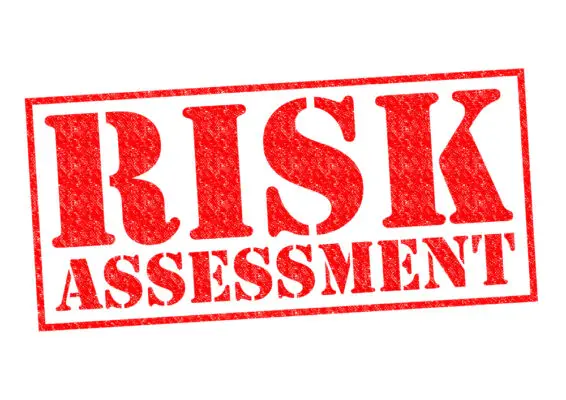Risk assessment is an aspect of business operations allowing organizations to identify potential hazards and implement preventive measures to ensure the safety of their employees, assets, and overall operations.
In today’s fast-paced and complex business environment, traditional manual risk assessment methods may not be sufficient to manage risks effectively.
This is where risk assessment software comes into play, offering advanced tools and technologies to streamline the risk assessment process. This in-depth review explores the benefits and features of risk assessment software, highlighting its role in maximizing business safety.
This article will explore the differences between risk assessment, risk management, and risk analysis comprehensively and objectively, aiming to provide a clear understanding of these concepts.
Additionally, it will examine the integration of risk assessment software with permit-to-work and isolation management solutions, showcasing the seamless coordination and enhanced safety measures that can be achieved.
Furthermore, this review will evaluate the Palisade software tools for risk modeling and decision analysis, emphasizing their capabilities in supporting informed decision-making and mitigating potential risks.
Lastly, the article will shed light on the purpose and functionalities of risk management software, emphasizing its role in centralizing risk-related data, facilitating risk monitoring, and ensuring compliance with industry standards.
This article aims to provide businesses with a comprehensive analysis of risk assessment software, enabling them to make informed decisions on its implementation.

What Is the Difference Between Risk Assessment, Risk Management, and Risk Analysis?
Risk management, risk assessment, and risk analysis are three key components in ensuring the safety and security of businesses.
Risk assessment involves identifying and evaluating potential risks that could impact a business.
Risk management focuses on implementing strategies and measures to mitigate and control those risks.
On the other hand, risk analysis involves systematically examining and evaluating the risks identified.
This enables businesses to make informed decisions and prioritize their risk management efforts.
Risk Management
Implementing effective risk management strategies is crucial for businesses to ensure the safety of their operations and protect against potential hazards and uncertainties.
Risk management involves identifying, assessing, and prioritizing risks, followed by applying coordinated and economical resources to minimize, monitor, and control the probability and impact of unfortunate events.
Risk managers are vital in this process, as they oversee and implement risk management strategies within an organization.
The risk management process typically includes risk identification, analysis, and evaluation.
Through a thorough risk assessment, businesses can develop strategies that can help reduce potential threats, make informed decisions to enhance safety and minimize financial losses.
Risk Assessment
One crucial aspect of effective risk management is conducting a comprehensive analysis of potential hazards and uncertainties, allowing organizations to develop strategies that minimize financial losses and optimize operational safety.
To achieve this, organizations can leverage risk assessment software designed to facilitate identifying, evaluating, and mitigating risks. This software enables organizations to streamline risk assessment by providing tools and frameworks for assessing various risks, including cybersecurity and security.
It systematically identifies and evaluates potential threats, vulnerabilities, and impacts, enabling organizations to prioritize their risk management efforts.
Moreover, risk assessment software integrates with enterprise risk management systems, enabling organizations to centralize and standardize risk assessment processes across different business units.
Organizations can use risk assessment software to enhance their risk management capabilities and make informed decisions to maximize business safety.
Four key benefits of using risk assessment software include:
1. Improved accuracy: Risk assessment software utilizes data-driven approaches and standardized methodologies, reducing the subjectivity and bias associated with manual risk assessments.
2. Enhanced efficiency: Automation features in risk assessment software accelerate the assessment process, allowing organizations to conduct more frequent and comprehensive evaluations.
3. Centralized risk data: Risk assessment software enables organizations to consolidate risk data from various sources, providing a holistic view of the organization’s risk landscape.
4. Real-time monitoring: Risk assessment software allows for real-time monitoring of risks, enabling organizations to identify emerging threats and take timely preventive measures proactively.
Risk Analysis
An essential aspect of effective risk management involves conducting a comprehensive analysis of potential hazards and uncertainties, which allows organizations to develop strategies that minimize financial losses and optimize operational safety.
Risk analysis is a systematic process that involves identifying, assessing, and evaluating risks to determine their likelihood and impact on business operations. This process is often conducted using a risk management framework, which provides a structured approach to identifying and addressing risks.
A key component of risk analysis is the development of a risk register, a document that lists all identified risks and their corresponding risk scores. These risk scores help prioritize risks based on their potential impact and likelihood of occurrence.
Risks can be categorized into different categories, such as strategic, financial, operational, and compliance risks, allowing organizations to manage and mitigate them effectively.
Through a comprehensive risk analysis, organizations can thoroughly understand their potential risks and develop suitable mitigation strategies. This proactive approach aids businesses in minimizing financial losses, optimizing operational safety, and ensuring long-term success.
| Risk Category | Risks related to financial activities include market volatility, credit risks, or liquidity issues. |
|---|---|
| Strategic Risks | Risks that arise from changes in the business environment, such as new competitors, changes in regulations, or shifts in consumer preferences. |
| Financial Risks | Risks associated with day-to-day business operations include equipment failure, supply chain disruptions, or employee errors. |
| Operational Risks | Risks arising from non-compliance with laws, regulations, or industry standards can result in legal penalties, reputational damage, or loss of customer trust. |
| Compliance Risks | Risks from external factors beyond the organization’s control, such as natural disasters, political instability, or economic downturns, can impact business operations and profitability. |
| External Risks | Risks stemming from external factors beyond the organization’s control, such as natural disasters, political instability, or economic downturns, can impact business operations and profitability. |
Integrated Permit to Work, Risk Assessment & Isolation Management Solution
The Integrated Permit to Work, Risk Assessment & Isolation Management Solution offers a comprehensive approach to ensuring business safety.
This software provides a powerful tool for organizations to manage and control work activities systematically and efficiently. Its integrated features enable businesses to streamline their processes, minimizing the risk of accidents and incidents.
The risk assessment component allows users to identify and evaluate potential hazards, ensuring appropriate control measures are implemented.
Additionally, the isolation management feature enables organizations to manage equipment isolation procedures effectively, reducing the likelihood of equipment-related accidents.
Integrating permit-to-work processes ensures that work activities are properly authorized and monitored, increasing safety measures.
Overall, this risk management software provides businesses with a reliable and efficient solution for controlling work and maximizing business safety.
Palisade Software Tools for Risk Modeling & Decision Analysis
Palisade Software Tools for Risk Modeling & Decision Analysis is a critical component in the realm of safety risk and business risk management practices. These tools provide a comprehensive solution for organizations to evaluate and mitigate potential risks, enabling informed decision-making processes.
Palisade Software Tools enable businesses to analyze risks using advanced modeling techniques. This helps in identifying vulnerabilities and developing effective risk management strategies.
This software offers a wide range of features, including Monte Carlo simulation, decision trees, and optimization tools, which assist in quantifying uncertainties and evaluating different scenarios.
With its user-friendly interface and robust analytical capabilities, Palisade Software Tools empower businesses to make data-driven decisions, enhancing overall safety and minimizing potential risks in their operations.

What is Risk Management Software
Risk management software is a powerful tool that offers several primary benefits to organizations.
It allows businesses to identify, assess, and prioritize risks, enabling them to make informed decisions and take appropriate actions to mitigate potential threats.
Additionally, this software facilitates timely risk remediation by providing a centralized platform for tracking and managing risks, allowing organizations to respond quickly and effectively to emerging risks.
Moreover, it offers real-time updates on all company assets, providing a comprehensive view of potential risks and ensuring that organizations can proactively address them to safeguard their operations and assets.
Primary Benefits
Risk assessment software can maximize business safety by offering a range of primary benefits that enhance the overall security framework. This software enables organizations to identify and manage potential risks, particularly financial risks effectively, that may have a significant impact on the business.
The software offers a systematic approach to risk management, allowing companies to understand their risk profile and effectively allocate resources.
The software also evaluates potential negative impacts associated with different risk scenarios, enabling organizations to make informed decisions and proactively mitigate risks.
Risk assessment software plays a crucial role in safeguarding businesses by providing valuable insights and tools to manage risks and protect against potential threats effectively.
| Primary Benefits of Risk Assessment SoftwareBenefits | |
|---|---|
| 1. Enhanced identification and management of potential risks | 2. Systematic approach to risk management |
| 3. Comprehensive understanding of risk profile | 4. Evaluation of potential negative impacts |
Timely Risk Remediation
Timely risk remediation ensures that potential threats are addressed promptly and effectively, minimizing negative impacts on the organization. In today’s digital landscape, where cyber attacks are becoming increasingly prevalent, organizations must prioritize risk assessment and management to protect their assets.
Risk assessment software is crucial in identifying vulnerabilities and providing actionable insights to mitigate risks. Organizations can promptly address identified risks and prevent potential breaches, financial losses, and reputational damage.
Moreover, timely risk remediation enables organizations to align their risk appetite with their decision-making processes, ensuring that risks are managed in accordance with their tolerance levels.
Additionally, efficient risk remediation allows organizations to consider risk transfer options, such as insurance, for operational risks that cannot be completely eliminated.
Utilizing risk assessment software to achieve timely risk remediation is essential for maximizing business safety and resilience.
Get Real-time Updates on All Company Assets
Real-time updates on all company assets are crucial for effective management and informed decision-making in today’s dynamic business environment. Access to real-time information allows organizations to identify potential risks and take immediate action to minimize legal liabilities and mitigate economic impact.
Businesses can use risk assessment software to track and monitor their assets in real-time, ensuring that agreed-upon controls are in place and adhered to. These updates allow for data-driven decision-making and provide an overview of the organization’s enterprise security risk assessments.
With this level of visibility, businesses can proactively identify vulnerabilities, address them promptly, and enhance overall security measures. When combined with risk assessment software, real-time updates on company assets provide the necessary tools for businesses to maximize safety, minimize risks, and make informed decisions.
Risk Assessment Matrix Template
The Risk Assessment Matrix Template provides a comprehensive and structured approach for evaluating and prioritizing potential risks in a business, enhancing decision-making processes, and promoting a proactive approach to risk management.
This template is a valuable tool for businesses to identify and assess risks across various business units and processes. By using the risk assessment matrix, organizations can effectively analyze risks and determine their potential impact on the business. This allows for the implementation of agreed-upon controls to mitigate risks and ensure the safety of the business.
The template also aids in integrating risk analysis into an integrated risk management framework, enabling businesses to adopt a holistic approach to risk management.
Overall, the Risk Assessment Matrix Template is an essential resource for businesses seeking to maximize safety and minimize potential risks.
Frequently Asked Questions
How can risk assessment software helps businesses improve their safety measures?
Risk assessment software can help businesses improve safety measures by systematically identifying, evaluating, and mitigating potential risks. It enables businesses to track and manage risks efficiently, implement preventive measures, and ensure compliance with safety regulations.
What are the key features and benefits of an integrated permit-to-work, risk assessment, and isolation management solution?
An integrated permit-to-work, risk assessment, and isolation management solution offer key features such as centralized control, real-time monitoring, and automated processes, enhancing safety, compliance, efficiency, and risk reduction in businesses.
How can Palisade software tools assist in business risk modeling and decision analysis?
Palisade software tools can assist businesses in risk modeling and decision analysis by providing comprehensive probabilistic analysis and optimization techniques. These tools enable businesses to assess and evaluate risks, make informed decisions, and maximize safety measures effectively.
What are the main functionalities and advantages of risk management software?
Risk management software offers a range of functionalities and advantages. It allows businesses to identify, assess, and prioritize risks, develop mitigation strategies, and monitor their effectiveness. It provides real-time data analysis, collaboration tools, and customizable reporting options to enhance decision-making and improve business safety.
Can you provide an example or explanation of how to use a risk assessment matrix template effectively in the context of business safety?
To effectively use a risk assessment matrix template in the context of business safety, one should first identify and prioritize potential risks. Then, assign numerical values to the likelihood and impact of each risk, and plot them on the matrix to determine the appropriate response strategies.

Conclusion
Maximizing business safety is crucial for any organization, and risk assessment software is vital in achieving this goal. Businesses can effectively identify and manage potential risks using integrated permit-to-work, risk assessment, and isolation management solutions.
Palisade software tools for risk modeling and decision analysis further enhance the risk assessment process, enabling businesses to make informed decisions based on comprehensive data analysis.
Risk management software streamlines identifying, assessing, and mitigating risks, ensuring a proactive approach to safety.
Utilizing a risk assessment matrix template provides a structured framework for evaluating and prioritizing risks, enabling businesses to allocate resources effectively.
Implementing risk assessment software is essential for businesses to enhance safety measures and maximize protection against potential risks.
Potential impact and the likelihood of occurrence. Risks can be categorized into different categories, such as strategic, financial, operational, and compliance risks, allowing organizations to manage and mitigate them effectively.
Conducting a thorough risk analysis, organizations can comprehensively understand their potential risks and develop appropriate mitigation strategies. This proactive approach helps businesses minimize financial losses, optimize operational safety, and ensure long-term success.

Chris Ekai is a Risk Management expert with over 10 years of experience in the field. He has a Master’s(MSc) degree in Risk Management from University of Portsmouth and is a CPA and Finance professional. He currently works as a Content Manager at Risk Publishing, writing about Enterprise Risk Management, Business Continuity Management and Project Management.

